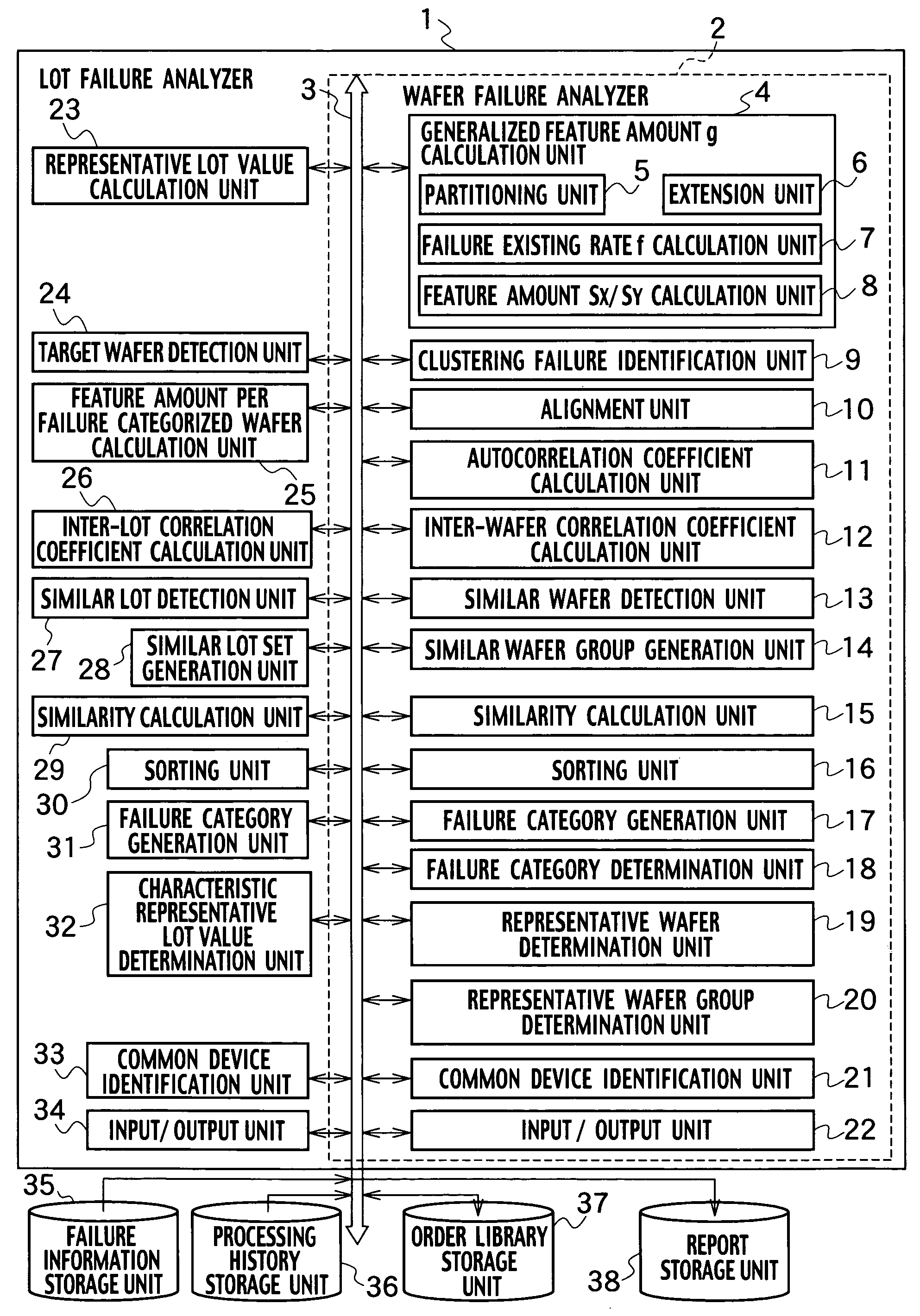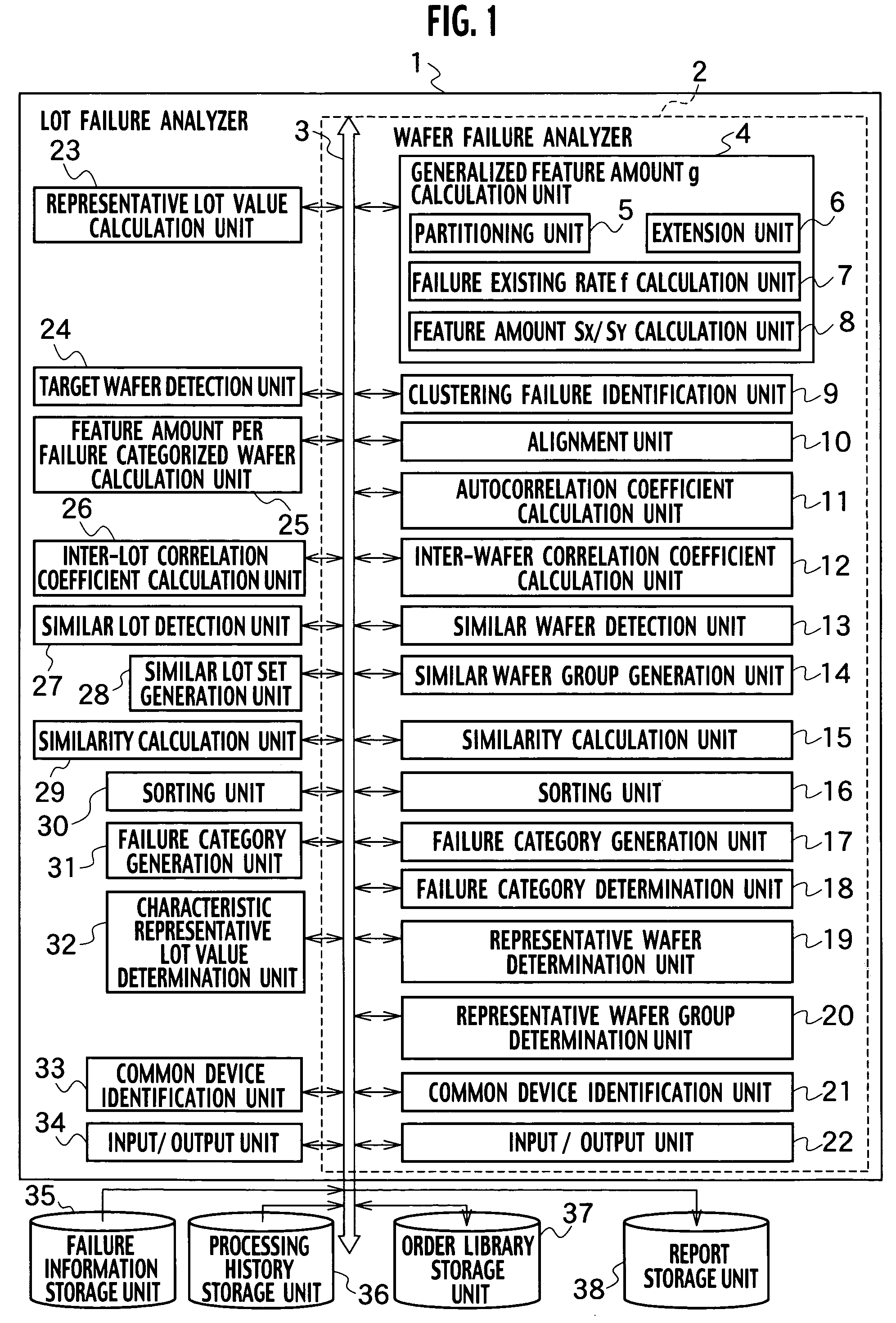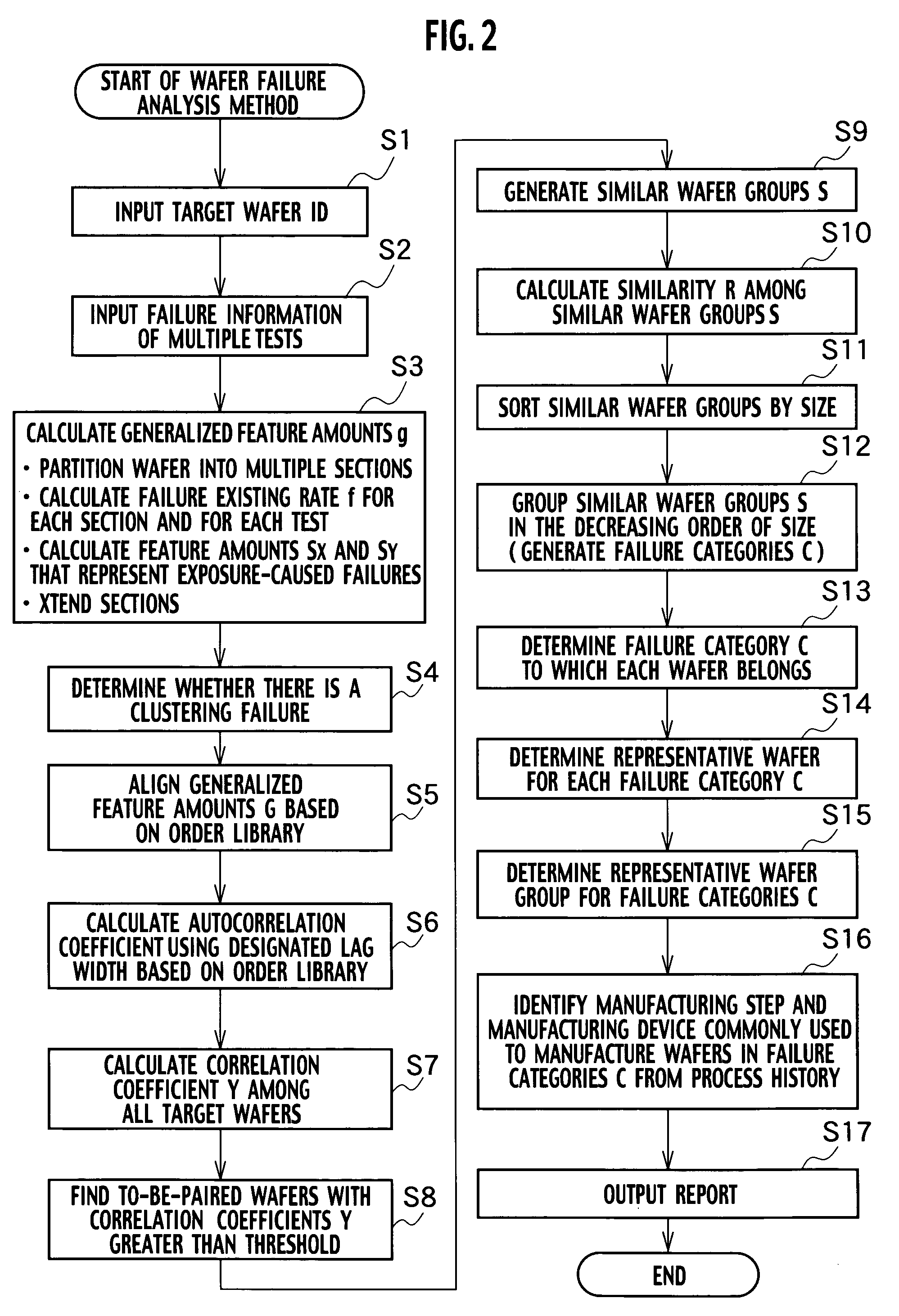Method for analyzing fail bit maps of waters and apparatus therefor
a failure analysis and fail bit technology, applied in electrical equipment, semiconductor/solid-state device testing/measurement, reliability increasing modifications, etc., can solve problems such as reducing lsi yields and failures that are obvious
- Summary
- Abstract
- Description
- Claims
- Application Information
AI Technical Summary
Benefits of technology
Problems solved by technology
Method used
Image
Examples
example 1
[0111]In Example 1, the wafer failure analyzer 2 in FIG. 1 and the wafer failure analysis method in FIG. 2 are described. In Example 1, wafer failure distribution is represented by a lot of numerical value groups, and wafers with similar failure distributions are automatically identified.
[0112]In step S1, a target wafer ID is input to the input / output unit 22.
[0113]In step S2, failure information as shown in FIGS. 4 through 7 is input from the failure information storage unit 35. The failure information includes wafer failure position data, which is identified within a wafer indication region 41 and a failure indication region 42. This failure information is formed based on the FBM of the failure bits in certain semiconductor memory products, which have been tested after completion of a wafer manufacturing process, and stored in the failure information storage unit 35. The wafer indication region 41 shows an existing wafer region. The failure indication region 42 shows failure bit p...
example 2
[0153]In Example 2, the failure categories C, which are sets of wafers, each having similar failure distributions, are generated from all of the wafers manufactured at a plant within a certain period such as one day or one week. Example 2 also employs the wafer failure analyzer 2 in FIG. 1 and conforms to the flowchart of FIG. 2.
[0154]To begin with, in step S1, a target wafer ID to be subjected to failure analysis is input. In Example 2, wafers to be manufactured at a plant within one day are subjected to failure analysis.
[0155]In the following, steps S2 through S9 are the same as those in Example 1.
[0156]In step S10, the similarity Rij between the similar wafer groups Si and Sj is calculated. The threshold for the similarity Rij is set to 0.5. It is determined that the similar wafer groups Si and Sj with a greater similarity Rij than the threshold of 0.5 are similar to each other.
[0157]For example, as shown in FIG. 20, the similarity R106 between the similar wafer groups S10 and S6...
example 3
[0169]In Example 3, the sections for calculating the generalized feature amounts g in step S3 of FIG. 2 are moved, expanded, and / or contracted. This allows improved accuracy in detection of wafers with similar failure distributions.
[0170]As shown in FIGS. 22 and 23, failure distributions in two wafers are extraordinarily similar to each other in that failures tend to gather at the outer regions of the wafers. It is thought that the cause of failures in those wafers in FIGS. 22 and 23 may be the same; therefore, it should be determined that those wafer failure distributions are similar to each other. However, from detailed examination based on step S3 in FIG. 2, it can be seen that the wafer in FIG. 22 has failures with clustering distribution gathering at the outer region of the wafer, in particular, in section C, and part of the failures exist in section D. In the wafer of FIG. 23, clustering failures grouped at the outer region of the wafer exist in sections C and E. The correlati...
PUM
 Login to View More
Login to View More Abstract
Description
Claims
Application Information
 Login to View More
Login to View More - R&D
- Intellectual Property
- Life Sciences
- Materials
- Tech Scout
- Unparalleled Data Quality
- Higher Quality Content
- 60% Fewer Hallucinations
Browse by: Latest US Patents, China's latest patents, Technical Efficacy Thesaurus, Application Domain, Technology Topic, Popular Technical Reports.
© 2025 PatSnap. All rights reserved.Legal|Privacy policy|Modern Slavery Act Transparency Statement|Sitemap|About US| Contact US: help@patsnap.com



